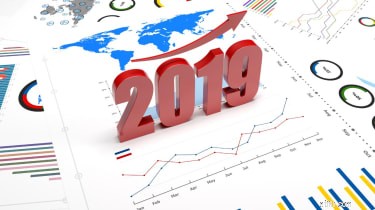
월스트리트의 전문가, 분석가 커뮤니티, 개인 투자자 모두 2018년에 한 해 동안 위기에 빠졌습니다. 다른 국가와의 미국 관세 분쟁, 격렬한 에너지 가격 변동 및 글로벌 성장 우려는 다양한 지점에서 시장을 황폐화시켰을 뿐만 아니라 새해를 맞이하여 전문가들이 주의를 당부하고 있습니다. 2019년 최고의 ETF는 몇 가지 특정 목표를 달성해야 합니다.
우선, 시장이 직면한 모든 역풍에도 불구하고 시장이 상승할 경우 최소한의 상승세를 즐길 수 있도록 하면서 방어적인 위치에 있는 일부 ETF를 원할 것입니다. 수많은 전문가 시장 전망에서 2019년 Standard &Poor의 500개 주가 지수가 상승했지만 그 중 어느 것도 활기가 없으며 모두 수많은 잠재적 함정에 대해 경고합니다. 낮은 변동성이나 소득을 강조하는 펀드로 포트폴리오를 고정하면 시장이 어떤 결과를 가져오든 강력한 위치에 설 수 있습니다.
또한 신중해야 합니다. 주식은 전체적으로 부진할 수 있지만 시장의 특정 영역이 완전히 폭발할 수 없다는 의미는 아닙니다. 따라서 올해 최고의 ETF 중 일부는 특정 부문, 산업, 심지어 세계의 다른 영역에 초점을 맞춰 더 나은 성과를 내기 위해 노력할 것입니다.
2019년에 매수할 최고의 ETF는 다음과 같습니다. 이 19개 펀드는 수천 개의 회사에 투자된 매우 다양한 바스켓에서 특정 테마의 혜택을 받기 위해 수십 개의 주식을 사용하는 집중 포트폴리오에 이르기까지 모든 영역을 운영합니다. 보수적인 투자자와 위험을 감수하는 사람 모두를 위한 ETF가 있습니다. 그리고 이러한 픽의 대부분은 패시브 인덱스 펀드이지만 숙련된 액티브 관리의 지력을 활용하는 ETF도 몇 개 있습니다. 살펴보세요:
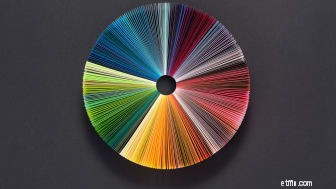
Vanguard S&P 500 ETF(VOO) 또는 최소한 일부 S&P 500 추적 펀드는 일반적으로 해당 연도에 대부분의 "최고의 ETF" 목록을 만듭니다. 세계 최고의 펀드매니저라도 시장을 이기는 데 어려움을 겪기 때문입니다.
SPIVA US Year-End 2017 보고서에 따르면 2017년 대형주 운용사 중 63.08%가 S&P 500을 하회했습니다. 이는 좋지 않으며 시간이 지남에 따라 악화됩니다. 3년 기간 동안 80.56%, 84.23% 5년 후에는 89.51%, 10년에는 92.33%, 15년에는 92.33%입니다.
매월 2시간만 투자를 검토하는 "맘앤팝" 투자자에게는 시장을 이기는 것이 훨씬 더 어렵습니다. 따라서 단순히 시장을 VOO 또는 유사한 펀드와 매칭하는 것이 어떻겠습니까?
그러나 올해 투자자들은 Vanguard Total Stock Market ETF를 고려할 수 있습니다. (VTI, $131.96). 왜요? Vanguard 자체가 직원을 위한 더 나은 옵션으로 보기 때문입니다. 2018년 Vanguard는 401(k)에서 S&P 500 추적 Vanguard Institutional Index Fund(VINIX)를 제거하고 Vanguard Total Stock Market Index Fund(VTSMX)로 대체했습니다.
대변인은 MarketWatch에 "VTSMX는 대형주, 중형주, 소형주에 대한 익스포저를 제공하는 미국 시장에 대한 최고의 대리인이라고 생각합니다. 반면 Vanguard Institutional Index Fund는 대형주에 집중합니다"라고 말했습니다. 필라델피아 인콰이어러에서 변경 사항에 대해 보고합니다.
VTI는 모든 규모의 3,600개 이상의 주식에 대한 노출을 제공합니다($7,834억 십억). Microsoft(MSFT)에서 580만 달러로 백만 Pernix Therapeutics Holdings (PTX) – 투자자에게 미국 주식 시장에 대한 포괄적인 노출을 제공합니다. 동시에, VTI의 보유 주식은 시가 총액에 따라 가중치가 부여됩니다. 이는 가장 큰 회사가 여전히 ETF의 성과에 가장 큰 영향을 미친다는 것을 의미합니다.
결과? VTI는 VOO와 매우 유사한 성능을 보이며 몇 년 동안 몇 bp 앞서고 다른 몇 년에는 약간 뒤처집니다. 이것은 또한 살 수 있는 가장 저렴한 펀드 중 하나입니다. 스킨플린트 비용이 0.04%라면 투자한 $10,000당 연간 $4만 지불하면 됩니다.
Vanguard 제공업체 사이트에서 VTI에 대해 자세히 알아보십시오.

앞서 언급했듯이 금융 전문가들은 2019년이 어떻게 될 것인지에 대해 다양한 의견을 가지고 있으며 모두가 장밋빛은 아닙니다. 따라서 2019년 최고의 ETF는 손실이 가장 적은 ETF일 수 있습니다.
2018년 4분기 월스트리트에서 화제가 되었던 저변동성 ETF에 진입하십시오. 이 펀드는 더 넓은 시장보다 덜 급격하게 움직이는 경향이 있는 주식을 목표로 합니다. 이는 더 넓은 시장이 하락할 때 중요한 특성입니다. 문제는 이러한 종류의 펀드가 시장 회복을 지연시킬 수 있다는 것입니다. 그러나 Leg Mason 저변동성 고배당 ETF (LVHD, $29.32) 보다 안정적인 가격 대비 높은 수입을 제공하여 차이를 메꾸는 데 도움이 됩니다.
LVHD의 포트폴리오는 변동성이 낮을 뿐만 아니라 배당금도 높은 50~100개 주식으로 구성됩니다. ETF는 "상대적으로 높은 지속 가능한 배당 수익률"을 지불하는 회사를 위해 3,000개의 주식을 선별합니다. 그런 다음 가격 및 수익 변동성에 따라 주식의 점수를 높이거나 낮춥니다. 거기에서 재조정 시 모든 주식의 가중치를 2.5%로 제한하고 모든 부문의 가중치를 25%로 제한합니다(부동산 투자 신탁은 펀드의 15%를 초과할 수 없음). 이 비율은 주식의 상승과 하락에 따라 재조정 사이를 이동할 수 있습니다.
Legg Mason 저변동성 고배당은 현재 부동산(15.0%)과 임의 소비재(10.3%)에서 두 자리 수의 추가 보유와 함께 유틸리티(26.4%)와 필수 소비재(18.2%)의 두 가지 낮은 거래량 주류에서 가장 무겁습니다. 최고 보유자는 맥도날드(MCD), 킴벌리-클라크(KMB), 전력회사 듀크 에너지(DUK)와 같은 견고한 회사의 후자입니다.
이 전략은 얼마나 효과적입니까? 모닝스타의 데이터에 따르면 2018년 4분기 동안 레그 메이슨의 펀드는 5.42% 하락한 반면 S&P 500은 13.52% 하락했습니다.
Legg Mason 제공업체 사이트에서 LVHD에 대해 자세히 알아보십시오.

몇몇 시장 전문가들은 향후 성장보다 가치를 선호한다고 표명했습니다. LPL Financial Research에서는 "2019년 가치는 2018년 중반에 시작된 경제 성장의 회복, 지속적인 성장 초과 성과 후 상대적으로 매력적인 밸류에이션, 재무에 대한 긍정적인 관점의 혜택을 받을 것으로 예상합니다."
그러나 대부분의 가치 ETF는 가격 대비 수익(P/E) 또는 가격 대비 판매(P/S)와 같은 지표를 고려하는 반면, 투자자는 다른 렌즈를 통해 가치를 바라보는 새로운 펀드를 고려할 수 있습니다. .
“수익 인식 페이지는 700페이지입니다. S&P의 70%는 이제 비GAAP(일반적으로 인정되는 회계 원칙) 수익을 보고합니다. GE는 비GAAP EPS의 4가지 다른 버전을 인쇄했습니다. 따라서 P/E를 사용하여 여러 회사의 가치를 비교하는 것은 점점 더 어려워집니다. “그래서 우리는 궁극적으로 기업 가치에 대한 잉여 현금 흐름의 척도로 결정했습니다. 해당 지표에서 가장 저렴해 보이는 주식은 쉽게 시장을 능가합니다. 가장 비싸 보이는 주식은 실적이 저조한 경향이 있습니다.”
미국 펀더멘털 안정성 및 가치 ETF 증류 (DSTL, $23.60) 둘 다 위험을 줄이도록 설계되었다는 점에서 LVHD와 한 가지 공통점이 있습니다. 그러나 DSTL은 앞서 언급한 가치 측정을 사용하여 주식을 선택하고 회사의 장기적인 안정성(안정적인 현금 흐름 및 낮은 부채 레버리지 포함)을 조사하여 이를 수행합니다.
"많은 경우 월가는 위험과 가치 평가를 별도의 버킷으로 생각하는 경향이 있습니다."라고 Cole은 말합니다. "하루 종일 위험 모델, 상관 관계 대 주식, 환율 변화 방식, 모든 종류의 시나리오를 실행할 수 있지만 대부분의 경우 이러한 대화는 무언가에 너무 많은 비용을 지불하고 있는지 여부에 대한 대화 없이 이루어집니다."
현재 DSTL은 정보 기술 주식(31.9%)에서 가장 무겁습니다. 사실, 상위 10개 종목 중 7개가 기술주이며, 여기에는 Apple(AAPL), Microsoft 및 Alphabet(GOOGL)가 포함됩니다. 이 펀드는 산업재(20.2%), 건강 관리(17.3%) 및 임의 소비재(12.9%)에서도 상당한 비중을 차지합니다.
* 12개월 수익률은 제공되지 않습니다. 2018년 10월 23일에 시작된 기금.
Distillate Capital 제공업체 사이트에서 DSTL에 대해 자세히 알아보십시오.
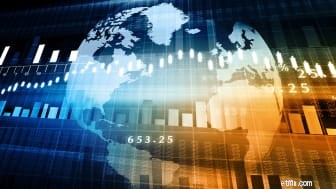
투자자들은 "모든 계란을 한 바구니에 담지 마십시오"라는 속담을 오랫동안 들어왔습니다. 시장 전문가들은 종종 미국 부문뿐만 아니라 지리적으로도 포트폴리오 다각화의 장점을 설교합니다.
CIMA 부사장인 Anthony Davidow는 "전 세계적으로 다양한 포트폴리오(많은 바구니에 알을 담는 포트폴리오)는 전년 대비 큰 시장 변동을 견디고 시간이 지남에 따라 보다 안정적인 수익을 제공하는 데 더 나은 위치에 있는 경향이 있습니다"라고 말합니다. , 대체 베타 및 자산 할당 전략가, Schwab Center for Financial Research.
투자자가 VTI를 통해 저렴하고 광범위한 미국 주식 익스포저를 얻을 수 있는 것처럼 Vanguard Total International Stock ETF를 통해 달러당 약 1페니로 광범위한 글로벌 주식을 소유할 수 있습니다. (VXUS, $48.90). VXUS는 주로 선진 유럽(41.4%), 선진 태평양(29.9%) 및 중국 및 인도와 같은 신흥 시장(21.3%)에 걸쳐 수십 개 국가의 거의 6,400개 국제 주식에 대한 액세스를 제공합니다.
VXUS는 전 세계 거의 모든 지역에 투자할 수 있게 해주지만, 세계에서 가장 큰 회사가 성능에 대해 가장 큰 발언권을 갖는다는 점에서 VTI와 비슷합니다. 즉, Nestle(NSRGY) 및 Royal Dutch Shell(RDS.A)과 같은 유럽 블루칩과 Tencent(TCEHY) 및 Alibaba(BABA)와 같은 성장하는 중국 기술 거물이 많이 있습니다.
이 글로벌 인덱스 펀드는 성공적인 단일 국가 베팅이 특히 어려울 수 있는 해에 분산을 제공하기 때문에 2019년 최고의 ETF입니다. 또한 높은 품질과 아주 저렴한 0.11%의 비용 비율 덕분에 Kiplinger의 20대 매수 후 보유 ETF인 Kip ETF 20 중 한 곳을 차지했습니다.
Vanguard 제공업체 사이트에서 VXUS에 대해 자세히 알아보십시오.

일반적으로 "배당 성장"이라는 용어는 펀드가 배당금을 정기적으로 늘리는 회사를 보유하고 있음을 나타냅니다. WisdomTree Global ex-U.S.의 경우는 그렇지 않습니다. 품질 배당 성장 기금 (DNL, $50.61)
대신 DNL은 배당 프로그램을 품질 식별 수단으로 간주하는 국제 성장주 펀드입니다. 품질은 대부분의 해에 중요해야 하지만 글로벌 성장이 둔화되고 해외 주식 전망에 전문가들이 엇갈리는 2019년에는 특히 중요할 것입니다.
배당금에 초점을 맞춘 결과 평균 시장 가치가 150억 달러인 대부분의 대형 펀드가 탄생했습니다. 매우 높은 소득을 기대하지 마십시오. 수익률은 S&P 500에 가깝습니다.
이 Kip ETF 20 선택은 "미국을 제외한 선진 및 신흥 주식 시장에서 성장 특성을 가진 배당금 지급 회사"를 식별합니다. 일본(12.8%), 영국(11.3%), 스웨덴(7.0%), 노르웨이(6.8%), 스위스(6.7%)에서 상당한 비중을 차지하는 33개국에 지분을 보유하고 있습니다. 최고 보유 주식으로는 European Dividend Aristocrat British American Tobacco(BTI), Norwegian Telecom Telenor(TELNY) 및 일본 반도체 회사 Tokyo Electron(TOELY)이 있습니다.
WisdomTree 공급자 사이트에서 DNL에 대해 자세히 알아보십시오.

배를 시장과 어느 정도 일치하게 유지하기 위해 몇 가지 광범위한 시장 펀드를 보유하는 것이 좋지만 섹터 및 산업 펀드를 사용하여 "알파"(본질적으로 지수보다 더 나은 실적)를 생성하려고 시도할 수도 있습니다.
본질적으로 대공황 이후로 기술 부문은 일상 생활의 모든 측면에서 기술의 편재성이 증가함에 따라 거의 놓칠 수 없는 성장 게임이었습니다. 이는 스마트폰, 태블릿, 노트북과 같은 가제트의 사용 증가뿐 아니라 반도체 및 클라우드 기술과 같은 기술이 의료에서 자동차, 가전 제품에 이르기까지 다른 모든 영역으로 확산되고 있습니다.
하지만 기술주는 2018년 4분기에 역풍과 불확실성이 합쳐져 매도세를 보이면서 투자자들이 수익을 확보하게 되었습니다. 여전히 높은 밸류에이션으로 인해 투자자들은 변동성이 다시 상승할 경우 2019년에도 동일한 조치를 취하게 될 수 있으며, 이것이 보수적인 태도가 여기에서 보상을 받을 수 있는 이유입니다.
First Trust Nasdaq 기술 배당 지수 펀드 (TDIV, $33.94)는 이 부문에서 더 잘 알려진 회사에 대한 플레이입니다. TDIV는 지난 12개월 동안 최소 1회의 배당금 제공 및 0.5% 이상의 수익률을 포함하여 몇 가지 심사를 통과한 시장 가치가 5억 달러 이상인 거의 100개의 배당금 지급 기술 및 통신 회사를 보유하고 있습니다.
이 펀드는 약 80%의 기술과 20%의 커뮤니케이션이 있으며 시장 가치와 배당 가치를 모두 고려하는 수정된 시가 총액 가중치 방법을 사용하며 주식 집중도가 너무 높아지는 것을 방지합니다. TDIV는 인텔(INTC) 및 인터내셔널 비즈니스 머신(IBM)의 8% 이상의 비중을 포함하는 상위 10개 종목이 펀드의 58%를 차지하는 여러 주식에서 여전히 많은 비중을 차지하고 있습니다.
TDIV의 많은 보유 주식은 2019년에 잠재적인 반등 가능성이 있습니다. 그러나 시장이 2019년에 여전히 불안정하더라도 이 ETF의 평균보다 훨씬 나은 수익률은 투자자에게 약간의 안정을 제공해야 합니다.
First Trust 제공업체 사이트에서 TDIV에 대해 자세히 알아보십시오.

격주로 의료 수술 지원 로봇, 고도로 자동화된 공장, 거실에 잠입하는 가상 비서 등 기계가 어떻게 세상을 장악하고 있는지에 대한 이야기를 읽습니다. 이것은 흥미로운 이야기를 만들어내지만(직장을 계속 유지하는 것이 걱정된다면 우울하지만) … 또한 환상적인 투자 기회를 만들기도 합니다.
로봇 공학 및 자동화 산업은 성장으로 가득 차 있습니다. Technavio는 전 세계 로봇 공학 시장이 2017년 320억 달러에서 2022년 770억 달러 이상으로 두 배 이상 성장할 것으로 예상합니다. Mordor Intelligence는 2018년에서 2023년 사이에 전 세계 로봇 시장에서 24.52%의 복합 연간 성장률을 예상합니다. Zion Market Research는 전 세계적으로 자동화 시장은 2017년의 2,0172억 달러에서 2024년까지 3,219억 달러에 이를 것입니다. 수치는 다양하지만 방향은 분명합니다. 이제 시작입니다.
Robo 글로벌 로봇 및 자동화 지수 ETF (ROBO, $34.05)는 단일 추세를 다루기 위해 여러 부문/산업에 걸쳐 있는 소위 "주제" ETF입니다. 이 경우 미국 직장 및 그 외 지역에서 자동화 및 로봇 공학에 대한 의존도가 높아졌습니다.
2013년 설립된 이래로 10억 달러 이상의 자산을 축적한 ROBO는 50:50으로 분할된 94개 보유 포트폴리오입니다. 절반은 제조 및 산업(15%), 의료(10%) 및 물류 자동화(9%)와 같이 자동화의 혜택을 받는 비즈니스에 사용됩니다. 나머지 절반은 컴퓨팅, 처리 및 AI(19%), 작동(12%) 및 감지(12%)를 포함하여 이러한 변화를 지원하는 기술에 사용됩니다. 홀딩스에는 열화상 카메라 및 이미징 센서와 같은 것을 설계하는 FLIR Systems(FLIR)와 같은 회사가 포함됩니다. 자동화 및 계측 장비를 제공하는 Brooks Automation(BRKS); 그리고 Intuitive Surgical(ISRG)은 증가하는 편재성으로 인해 2019년 최고의 건강 관리 주식 중 하나로 선정되었습니다. 2018년에는 da Vinci Surgical System 기계로 100만 건 이상의 수술을 시행했습니다.
펀드 제공업체인 ROBO Global의 사장 겸 CIO인 William Studebaker는 2018년에 "우리는 로봇 공학 군비 경쟁의 한가운데에 있습니다. 이는 기업이 관련성을 유지하기 위해 투자해야 하는 기술입니다. 모든 산업을 살펴보면 투자 속도가 가속화되고 있습니다.”
ROBO 글로벌 제공업체 사이트에서 ROBO에 대해 자세히 알아보세요.

SPDR S&P Biotech ETF (XBI, $80.12) 여러 가지 이유로 생명공학 분야에 투자하는 환상적인 방법입니다. 그 중 생명공학 M&A의 "선순환"이 있습니다.
종종 ETF가 지수를 추적할 때 회사는 "떨어져" 해당 지수에서 빠져 나옵니다. 예를 들어, 그들의 주식은 시장 가치가 지수에 남아 있을 만큼 충분히 크지 않은 지점까지 하락할 수 있습니다(펀드의 성과에 무게를 둠). 그러나 주식이 지수를 떠날 수 있는 또 다른 방법은 갑자기 매수된 경우입니다. 일반적으로 해당 지수는 매수 프리미엄 덕분에 주가가 급락하면 혜택을 볼 것입니다. 그런 다음 해당 주식은 일반적으로 올바른 방향(위쪽)으로 향하고 있는 유망주로 교체되어야 합니다.
XBI는 수정된 동일 가중 방법론을 사용하는 120개 생명공학 주식의 포트폴리오입니다. 따라서 가장 큰 주식이 가장 큰 발언권을 갖는 대부분의 한도 가중 펀드보다 XBI는 모든 규모의 생명공학 주식(대형, 중형 및 소형)이 펀드에 유사한 영향을 미칠 수 있도록 합니다. 결과적으로 상위 10개 종목에는 70억 달러 규모의 Loxo Oncology(LOXO)와 610억 달러 규모의 Celgene(CELG)이 포함됩니다. 이는 최근 BMY(Bristol-Myers Squibb)의 인수 제안으로 급등했으며 XBI에서 대체해야 합니다. 거래가 진행되어야 하는 인덱스입니다.
XBI는 M&A의 "선순환"(일반적으로 Celgene보다 훨씬 작은 회사가 포함됨)의 혜택을 받을 수 있을 뿐만 아니라 작은 생명공학 주식이 약물 시험 성공으로 누리는 더 큰 주가 상승으로부터 더 나은 위치에 있습니다. 물론 인식해야 할 부정적인 측면은 시도가 부족할 때 더 큰 격차로 고통받을 수 있다는 것입니다.
여기에서 특별히 언급하자면:보다 균형 잡힌 건강 관리 펀드를 찾는 투자자는 Invesco S&P 500 Equal Weight Health Care ETF(RYH) – 여기에서 자세히 읽을 수 있는 Kip ETF 20 선택을 고려해야 합니다.
SPDR 제공자 사이트에서 XBI에 대해 자세히 알아보십시오.
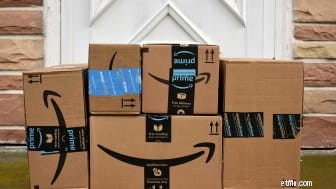
미국 경제 성장은 2019년에 둔화될 수 있지만 이는 여전히 확장 중이며 미국인들은 2017년 말 세금 개편 이후 약간 낮아진 IRS 부담을 짊어지는 동시에 임금 상승을 계속 보고 있습니다. 이는 재량 소비재 부문 전반에 걸쳐 좋은 소식입니다. 미국인이 추가로 지출할 돈이 있다면 이러한 회사에 지출할 가능성이 높은 제품 및 서비스 회사입니다.
그러나 모든 소비재 주식이 동등하게 구성되는 것은 아닙니다. 예를 들어, 오프라인 쇼핑몰 무리가 빠르게 감소하고 있습니다. Sears(SHLDQ)는 멸종 위기에 처했고, JCPenney(JCP)는 작년에 페니 스톡 상태에 이르렀고, Macy's(M)는 작년에 반등했습니다. 약한 휴가 기간을보고하여 2019를 시작하는 회귀를 보여주었습니다. 따라서 양질의 임의소비재 ETF는 "올바른" 주식에 적절하게 배치되어야 합니다.
John Hancock 멀티팩터 임의소비자 ETF (JHMC, $29.73) 현재 최고의 위치에 있는 많은 소비자 플레이에서 큰 비중을 차지하고 있습니다. JHMC는 "학계 연구에서 더 높은 기대 수익률과 연결되어 있는 요인(작은 상한, 더 낮은 상대 가격, 더 높은 수익성)"을 강조하는 다요소 지수를 추적합니다.
JHMC의 145개 주식 중 최고는 두 자릿수 성장을 지속하고 클라우드 컴퓨팅 확장의 혜택을 받는 유비쿼터스 전자 상거래 업체인 Amazon.com(AMZN)입니다. Home Depot(HD) 및 Lowe's(LOW)는 지금까지 주택 개조 사업이 Amazon의 무분별한 확산으로부터 대부분 보호받고 있습니다. 그리고 미디어 및 엔터테인먼트를 사랑하는 Walt Disney(DIS)가 있습니다.
그러나 JHMC의 매력은 미국인의 지출이 줄어들더라도 여전히 잘할 수 있는 회사에 더 큰 비중을 두는 것입니다. Amazon은 막대한 소매 할인과 비용 절감 프라임 프로그램(TV, 영화, 음악 및 연간 $119에 무료 배송)을 자랑합니다. 맥도날드는 저렴한 패스트푸드의 왕입니다. 그리고 Dollar General(DG)은 가장 빠듯한 예산을 사용합니다.
Learn more about JHMC at the John Hancock provider site.
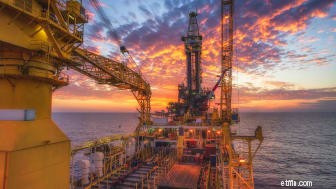
Oil prices looked like they would celebrate a considerable win for much of 2018. However, West Texas Intermediate and Brent crude oil tanked in the final quarter over concerns about weak global demand, a supply glut and the inability for OPEC cuts to stabilize the energy market.
But several analysts believe oil will rebound in 2019. That includes BofA Merrill Lynch, which said in its 2019 look-ahead, “The outlook for commodities is modestly positive despite a challenging global macro environment. We forecast Brent and WTI crude oil prices to average $70 and $59 per barrel, respectively in 2019.” Those figures would translate into respective gains of 30.1% and 25.2% compared to their final 2018 prices.
But some energy companies are more sensitive to changes in commodity prices – including exploration and production (or “upstream”) firms. These companies are responsible for the relatively higher-risk business of finding, extracting, producing and selling oil and gas. These companies each have a “breakeven price” – how much a barrel (oil) or million BTUs (natural gas) must sell for to cover the costs of production; prices above that line result in profits, while prices below result in losses.
The SPDR S&P Oil &Gas Exploration &Production ETF (XOP, $30.42) is the largest E&P-focused ETF on the market. XOP tracks a modified equal-weighted index of exploration and production firms that ensures large, mid- and small-cap stocks all have decent representation in the fund, and also makes sure no one stock dominates the ETF’s performance. For instance, $2.0 billion QEP Resources (QEP) is the top weight in the fund at 2.13%, while $17.1 billion Diamondback Energy (FANG) is No. 8 at 1.95%.
Because of its price sensitivity to oil, XOP tends to crater harder than broader energy funds such as the Energy Select Sector SPDR ETF (XLE) when energy dips; XOP fell 39.3% in the final quarter of 2018 compared to 25.3% for the XLE. But it also tends to gain much more when energy prices are on the upswing, making it a better play on a 2019 rebound.
Learn more about XOP at the SPDR provider site.

Another magnified play on the price of energy is the Invesco S&P SmallCap Energy ETF (PSCE, $10.21) – a tight portfolio of 37 small-cap energy stocks that average less than $2 billion in market value, compared to nearly $19 billion for the XOP.
In general, small-cap stocks tend to have higher growth prospects thanks to the law of large numbers (it’s much easier to double revenues from, say, $1 million than it is to double them from $1 billion). But they’re also naturally riskier, typically boasting narrower operations and having far less access to capital than their larger-cap brethren.
PSCE does hold some refining and pipelines businesses that aren’t as clearly tied to the price of oil and gas. However, it also holds E&P firms, and most importantly, more than half its portfolio (53%) is made up of equipment and services companies that also tend to be sensitive to energy prices. It’s also more lopsided, with six stocks at weights of 4% or more, including PDC Energy (PDCE) at a significant 8.4%. So single-stock risk is more of a concern here.
But if you go into PSCE with your eyes open, you can do well in an energy-market upturn. Even the first couple of weeks of 2019 have been kind to this fund, which has ripped off 16.5% gains compared to 7.8% for the XLE.
Learn more about PSCE at the Invesco provider site.

Real estate investment trusts (REITs) were created by law in 1960 as a way to open up real estate to individual investors. REITs typically own and operate real estate and are exempted from federal taxes … but in exchange must pay out at least 90% of their taxable income to shareholders in the form of dividends. This makes them very popular with income seekers, though as a result they also tend to struggle a bit when interest-rates rise (or when investors believe they will rise).
But the landscape for REITs is becoming a little friendlier. The Federal Reserve has already signaled a slower pace of interest-rate hikes in 2019, and recent comments from various Fed officials have displayed a more dovish stance.
The Vanguard REIT ETF (VNQ, $77.49) is the largest REIT ETF in existence, with its $28.8 billion in assets under management dwarfing the next-closest competitor, the Schwab US REIT ETF (SCHH, $4.6 billion in AUM). That’s thanks in large part to its long life (inception in 2004) as well as its 0.12% expense ratio, which is 90% lower than the average fees of similar funds.
VNQ holds a wide basket of roughly 190 REITs that covers the spectrum of real estate, from apartment buildings and offices to malls, hotels and hospitals. In this ETF, you’ll find companies such as communications-infrastructure play American Tower (AMT), mall owner and operator Simon Property Group (SPG), self-storage specialist Public Storage (PSA) and data center REIT Equinix (EQIX).
Investors should note that VNQ’s current yield of 4.7% sits at the very high end of its 10-year range.
Learn more about VNQ at the Vanguard provider site.
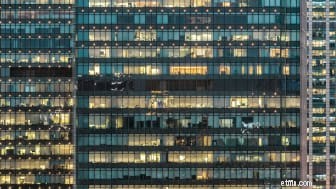
The Invesco KBW Premium Yield Equity REIT Portfolio (KBWY, $30.17) is one of the best ETFs to buy if you’re looking for a high current yield. VNQ’s payout is great compared to most equity funds, but KBWY’s, at well north of 8%, is downright gaudy.
Just understand that you typically don’t earn dividend yields that high without some added measure of risk.
The KBWY holds a cluster of just 30 small- and mid-cap REITs that include the likes of Office Properties Income Trust (OPI), which leases office space to government entities and other high-quality tenants; and MedEquities Realty Trust (MRT), which owns acute-care hospitals, short-stay and outpatient surgery facilities, physician group practice clinics and other health-care properties. It’s a concentrated portfolio, too, with more than a quarter of all assets piled into just the top five holdings.
These REITs offer higher yields in part because of their higher risk profiles. However, this ETF’s yield also has ballooned thanks to rough losses over the past couple years; the fund has declined nearly 20% since the start of 2017. (Yields, after all, are just dividends divided by the share price, so as the share price shrinks, yields grow.)
But KBWY investors may be richly rewarded with a 1-2 punch of performance and income should REITs in general outperform in 2019.
Learn more about KBWY at the Invesco provider site.

While most sector, industry and thematic ETFs tend to be U.S.-centric, investors can also get global (U.S. and international) and even purely international exposure to specific businesses and trends.
That said, a disclosure, and a mea culpa:EMQQ was in fact a recommendation in last year’s list of the best ETFs for 2018 … and it was a dog, dropping roughly 30%.
What went wrong?
Emerging markets broadly sold off hard last year amid China’s trade war with the U.S. and worries about a slowdown in growth across numerous major global markets – including China, which is home to more than 60% of EMQQ’s holdings. Top EMQQ holdings such as Chinese e-commerce play Alibaba, China search specialist Baidu (BIDU) and Russian internet company Yandex (YNDX) all produced several earnings beats last year and have analysts projecting breakneck growth ahead. But many of these stocks had reached high valuations after red-hot runs, and so despite fundamental strength in their underlying companies, they pulled back precipitously as investors locked in profits amid the uncertainty.
If emerging markets (and especially China) struggle once more in 2019, EMQQ will pay the price. But a resolution to the U.S.-China trade spat, as well as any better-than-expected economic growth in EMs, should light a fire under this ETF.
Learn more about EMQQ at the EMQQ provider site.

2018 was a breakout year for the budding (sorry) marijuana industry.
A growing tide, here and abroad, is bringing cannabis to the mainstream. Roughly two-thirds of the U.S. have legalized marijuana use for at least medical, if not recreational, purposes. That’s roughly the same ratio as the mix of Americans who are in favor of legalizing marijuana, according to a 2018 Gallup poll. Meanwhile, Canada last year became the largest legal marketplace for marijuana.
All this has stirred up a hornet’s nest of activity in medical marijuana companies. Canadian pharmaceutical and cannabis company Tilray (TLRY) spiked by well more than 800% year-to-date at one point in 2018, and spent December forging partnerships with Swiss pharma giant Novartis (NVS) and mega-brewer Anheuser-Busch InBev (BUD). Beer, wine and spirits titan Constellation Brands (STZ), which took a 9.9% stake in major cannabis producer Canopy Growth (CGC) in October 2017, quadrupled down on its bet with a $4 billion investment in 2018 to up its stake to 38%. Marlboro maker Altria (MO) spent $1.8 billion to buy a 45% interest in producer Cronos Group (CRON) late last year.
Clearly, marijuana is becoming big business, with plenty of fortunes to be made. But Wall Street analysts are only really beginning to scour this industry, so mom-and-pop investors are fairly short on reliable information. You could try to pick from among marijuana stocks. Or you could spread your bet across several companies via the ETFMG Alternative Harvest ETF (MJ, $31.29).
MJ has actually been around for a few years, racking up a respectable $770 million or so in assets under management since inception in 2015. The fund has 37 holdings – a wide array for such a relatively new industry – though it’s extremely top-heavy. At the moment, Cronos makes up 13.4% of net assets, Canopy Growth another 8.8%, Tilray 7.6% and Aurora Cannabis 7.4%.
Other top holdings include some interesting takes on the cannabis space, including organic cannabis producer Green Organic Dutchman (TGODF), medical marijuana producer CannTrust Holdings (CNTTF) and GW Pharmaceuticals (GWPH), whose multiple sclerosis treatment Sativex was the first cannabis-based drug to gain FDA approval.
Learn more about MJ at the ETFMG provider site.

Investors looking for protection sometimes look to bonds, which typically don’t produce the caliber of growth that stocks offer, but can provide decent income and some sort of stability.
That said, the rising-rate environment of the past couple of years has weighed down bonds and bond funds, as bond prices and yields move in opposite directions. And an uncertain year ahead for bonds, given the Federal Reserve’s shifting stance, means that investors may need a defter touch than what a basic index fund can provide.
The portfolio breakdown is certain to change over time as market conditions fluctuate. But as of this writing, nearly half of TOTL’s assets were invested in mortgage-backed securities (MBSes, 49.7%), another 19.8% was placed in U.S. Treasuries and 8.5% was in EM debt. TOTL also holds commercial MBSes, bank loans, investment-grade corporate bonds, junk debt and asset-backed securities.
The ETF’s bonds are high in quality, with nearly 69% of the fund’s debt earning the highest possible credit grade (Aaa). Only 19% of the holdings have junk status or are unrated. And the duration of 4.3 years implies that a one-percentage-point increase in interest rates would cause the ETF to decline by about 4.3%.
Investors at the moment are earning a substantial 3.6%, not to mention harnessing the brainpower of sub-adviser DoubleLine Capital in navigating future changes in the bond market.
* SEC 수익률은 최근 30일 동안의 펀드 비용을 공제한 후 얻은 이자를 반영하며 채권 및 우선주 펀드의 표준 측정값입니다.
Learn more about TOTL at the SPDR provider site.

Investors who are particularly worried about interest-rate hikes wreaking havoc in the fixed-income part of their portfolio can turn to the Pimco Enhanced Low Duration Active Exchange-Traded Fund (LDUR, $98.68) – another active bond fund among the ranks of the Kip ETF 20.
This fund is helmed by Pimco veterans Hozef Arif, David Braun and Jerome Schneider, who boast a combined 62 years of investment experience. Their task is to keep duration low, which will keep the fund from moving much when interest rates change. An effective duration of just 1.3 years across the portfolio means that a one-percentage-point change in interest rates would cause the portfolio to lose a mere 1.3%.
Often, shorter-term bonds offer skimpier yields, but LDUR is able to offer a nice payout of 3.7% thanks to its holdings in mortgage-backed securities, investment-grade corporates and EM debt.
Learn more about LDUR at the Pimco provider site.

Gold bulls will tout several benefits of investing in the yellow metal. It’s certainly an uncorrelated asset that doesn’t move perfectly with or against the stock market, and it’s often thought of as a hedge against inflation, as well as a safe haven against economic and political uncertainty. Plenty of experts will tell you, in fact, that most portfolios could use a 1% to 5% allocation in gold for added diversification.
Gold is off to its worst start to a year since 2013, but a few experts do think the metal still could rise in 2019. One of the biggest drivers is the U.S. dollar – gold is priced in dollars, so if the currency gains in value, that actually depresses the price of an ounce of gold. However, certain potential outcomes in 2019, such as the Federal Reserve pulling back the throttle on interest-rate hikes, could suppress the dollar, and thus help out gold.
“We see gold likely repricing lower through the middle of next year, at which point the Fed’s policy will move into restrictive territory,” writes Natasha Kaneva, Head of Metals Research &Strategy at JPMorgan, in the analyst firm’s 2019 gold outlook. “The curve will invert, the expansion will slow and expectations of Fed easing will build. At this juncture, we would expect real rates to move lower and gold’s fortunes to reverse, as gold tends to benefit from consistent drop in real yields during the lead up to recessions and thereafter.”
But physically holding real gold is an expensive chore – you have to get it delivered, have somewhere to store it and insure it, not to mention the costs associated with finding a buyer and unloading it when you want to sell. Thus, many investors tend to invest in gold via ETFs instead.
Shares of the GraniteShares Gold Trust (BAR, $128.83) represent 1/10th of an ounce of physical gold stored in vaults, so it’s a very direct way to participate in any upside in gold.
The GraniteShares Gold Trust also is the cheapest option on the market – again. BAR actually came to market in August 2017 as the cheapest such ETF with an expense ratio of 0.2%, but in June 2016, SPDR launched the SPDR Gold MiniShares Trust (GLDM) at just 0.18%. BAR took over as the low-cost leader by lowering its fees to 0.17% in October 2018.
Learn more about BAR at the GraniteShares provider site.

The market doesn’t go up forever. Investors learned that the hard way in the final quarter of 2018, when the Nasdaq fell into bear-market territory (a drop of at least 20% from a high), and the S&P 500 and Dow Jones Industrial Average came within a hair of snapping their nine-year bull runs.
For the most part, it simply pays to have a long-term buy-and-hold plan and simply stick with it through thick and thin, collecting dividends along the way and remaining with high-quality holdings that should eventually rebound with the rest of the market. In an environment in which everything seems doomed to go down, however, you might feel pressured to cut bait entirely. But if you do that, you risk missing out on a recovery, absorb trading fees and may lose out on attractive dividend yields on your initial purchase price.
Another option? Keep all your holdings and wait it out with a simple hedge in place.
The ProShares Short S&P500 ETF (SH, $30.44) provides the inverse daily return of the S&P 500, which in short means that if the S&P 500 declines by 1%, the SH should gain 1%.
This is not a buy-and-hold-forever fund. However, by adding this fund to your portfolio when the outlook is grim, you can help offset some of the losses to your long holdings during a down market. The natural trade-off is that if you’re still holding SH when the market recovers, you’ll blunt some of your portfolio’s gains. But that’s the risk you need to understand and accept if you want to use a protective hedge such as this.
Learn more about SH at the ProShares provider site.
Kyle Woodley was long EMQQ as of this writing, and has traded SH within the past three months.